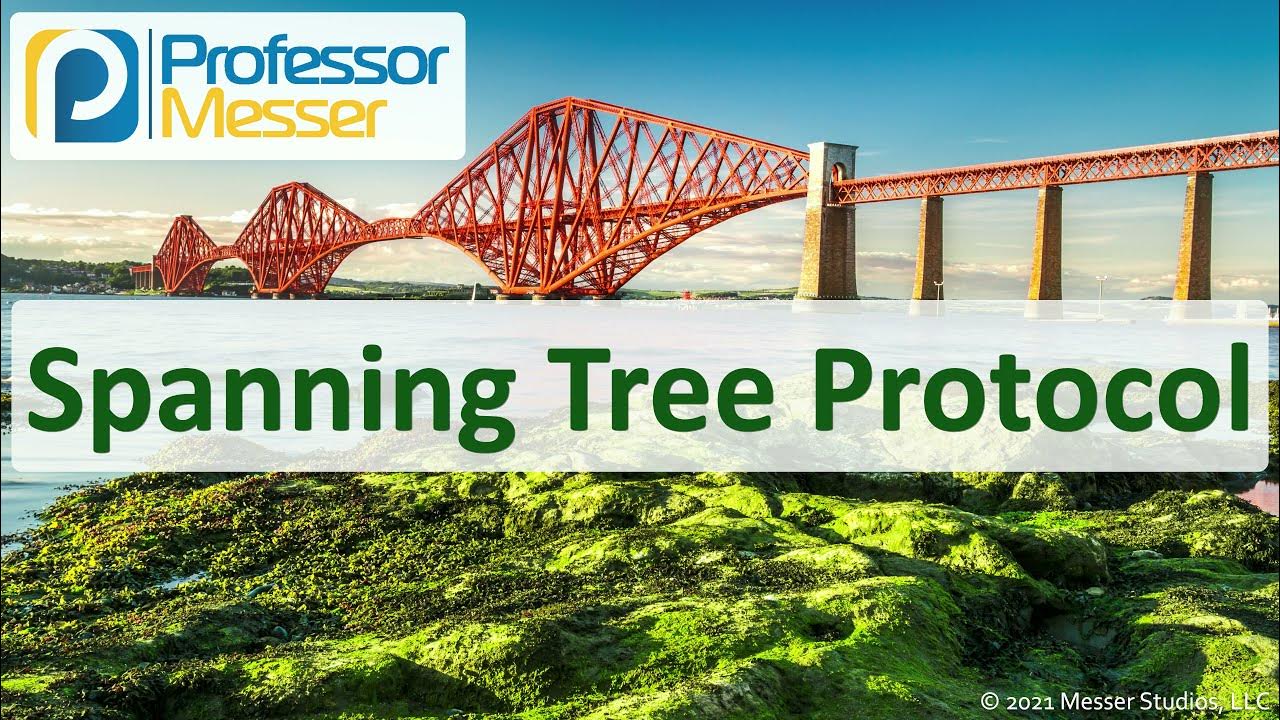Materi Pertemuan 7
Summary
TLDRThe discussion focuses on Spanning Tree Protocol (STP), a crucial network protocol that prevents loops in Ethernet LANs by managing the connections between switches. It emphasizes the importance of network topology, human error prevention, and the mechanisms STP uses to adapt to changes, including blocking and forwarding states. Various STP modes such as RSTP and MSTP are introduced, highlighting their advantages over traditional STP, particularly in terms of convergence speed. The session concludes with research tasks aimed at deepening understanding of bridging techniques and VLAN functionalities.
Takeaways
- 😀 STP (Spanning Tree Protocol) prevents loops in Ethernet networks by creating a loop-free topology, essential for reliable network operation.
- 😀 The configuration of switches is critical, as human errors can lead to network loops, emphasizing the need for clear network topology visualization.
- 😀 STP monitors network topology changes and adapts accordingly, ensuring optimal traffic paths while blocking redundant ones.
- 😀 Each switch port is assigned a cost based on its bandwidth, helping determine the most efficient route to the root bridge.
- 😀 RSTP (Rapid Spanning Tree Protocol) enhances STP by providing faster recovery from topology changes compared to standard STP.
- 😀 MSTP (Multiple Spanning Tree Protocol) allows for multiple VLANs to be mapped to a single spanning tree instance, optimizing resource usage.
- 😀 The root bridge serves as the reference point for path calculations in an STP topology, influencing the overall network structure.
- 😀 Port states in STP (e.g., forwarding, blocking) dictate the role of each port in maintaining a loop-free network.
- 😀 Understanding VLANs and their operation is crucial for effective network segmentation and management.
- 😀 A comparative analysis of STP, RSTP, and MSTP can highlight their differences and advantages, aiding in the selection of the right protocol for specific network needs.
Q & A
What is the purpose of Spanning Tree Protocol (STP)?
-The purpose of STP is to prevent unwanted looping in networks by managing how switches interconnect, ensuring that there are no redundant paths that could cause data packets to circulate indefinitely.
What are the roles of aggregation switches and edge switches in a network?
-Aggregation switches connect multiple edge switches, handling data from several sources, while edge switches are the final layer directly connecting to end users.
How does STP handle network topology changes?
-STP continuously monitors network conditions and detects changes in topology. When a change occurs, it automatically adapts by recalculating the best paths to maintain network reliability.
What are the differences between STP, RSTP, and MSTP?
-STP is the original protocol for loop prevention, but it is slow to converge. RSTP improves convergence times and is more adaptive. MSTP allows for multiple spanning tree instances, optimizing network traffic management.
Why is it important to visualize network topology?
-Visualizing network topology helps identify potential looping issues, as it provides a clear layout of connections between devices, enabling better understanding and troubleshooting.
What is the significance of cost in STP?
-In STP, cost represents the overhead associated with each path in the network. Lower costs indicate more optimal paths for data transmission, influencing the decisions made by STP in establishing the active topology.
How does STP prevent loops in a network?
-STP prevents loops by placing certain ports in a blocking state, which stops them from forwarding frames until they are needed, thus breaking the loop while maintaining alternative paths.
What happens when a network port fails with STP enabled?
-If a port fails, STP automatically recalculates the network paths, transitioning other ports from blocking to forwarding state as needed, ensuring continued network connectivity.
What role does the root bridge play in STP?
-The root bridge serves as a reference point for STP. All path calculations are made based on this central device, and other switches determine their paths based on their distance from the root bridge.
What is the homework assignment related to VLANs mentioned in the transcript?
-The assignment involves researching VLANs and illustrating their functionality using real-life analogies, along with creating a comparison table between STP, RSTP, and MSTP.
Outlines

此内容仅限付费用户访问。 请升级后访问。
立即升级Mindmap

此内容仅限付费用户访问。 请升级后访问。
立即升级Keywords

此内容仅限付费用户访问。 请升级后访问。
立即升级Highlights

此内容仅限付费用户访问。 请升级后访问。
立即升级Transcripts

此内容仅限付费用户访问。 请升级后访问。
立即升级浏览更多相关视频

Spanning Tree Protocol | CCNA - Explained

CORSO NETWORK ITA - Lezione 27 - STP "Spanning Tree Protocol"

Spanning Tree Protocol - N10-008 CompTIA Network+ : 2.3

Network #10: STP: Spanning Tree Protocol

Spanning Tree Protocol (STP)

Digital Transformation OEM Summit 2023 - Stratix & Machine Level Networking
5.0 / 5 (0 votes)
